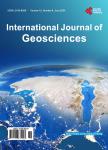Decoupling CO<sub>2</sub> from Climate Change
Decoupling CO<sub>2</sub> from Climate Change作者机构:Retired Pleasanton CA USA Independent Researcher Granite Bay CA USA
出 版 物:《International Journal of Geosciences》 (地球科学国际期刊(英文))
年 卷 期:2024年第15卷第3期
页 面:246-269页
学科分类:081704[工学-应用化学] 07[理学] 08[工学] 0817[工学-化学工程与技术] 070303[理学-有机化学] 0703[理学-化学]
主 题:Climate Change Greenhouse Effect Greenhouse Gases CO2 Water Vapor Clouds
摘 要:This study determines if there is a correlation between rising carbon dioxide levels and global warming. Historical data were reviewed from three different time periods spanning 500 million years. It showed that the curves and trends were too dissimilar to establish a connection. Observations from CO2/temp ratios showed that the CO2 and the temperature moved in opposite directions 42% of the time. Many ratios displayed zero or near zero values, reflecting a lack of response. As much as 87% of the ratios revealed negative or near zero values, which strongly negate a correlation. The infrared spectra showed the Greenhouse Gases had an exceptionally low absorption band between 11.67 μm to 9.1 μm, which is a zone called the infrared atmospheric window. Most of the Greenhouse Gases absorb little infrared inside that zone. And that zone is where the Earth’s surface emits almost all infrared radiation. Even with minimal absorbance, water vapor captures the most infrared radiation. It absorbs 84 times more than CO2, 407 thousand times more than methane, 452 thousand times more than ozone and 2.3 million times more than nitrous oxide. The Intergovernmental Panel on Climate Change (IPCC) and the United States EPA excluded water vapor because it was not associated with man-made activities. They reported that water vapor and clouds were simply feedback mechanisms from CO2. Clouds reflect radiation from the sun. The Northern Hemisphere is 2.7°F warmer than the Southern Hemisphere because of clouds. The world cloud cover has gone down 4.1% from 1982 to 2018. Calculations show that this could be responsible for 2.4°F of the 2.7°F. The research shows that most of the recent increase in temperature (89.9%) is because of fewer clouds.



